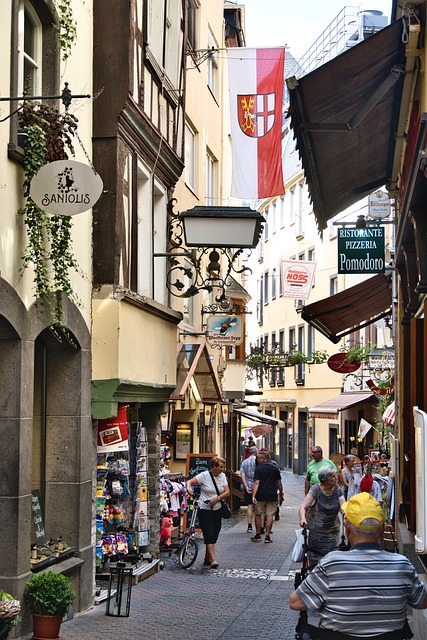Pop-up shops are transforming vacant urban spaces into vibrant temporary retail hubs, benefiting landlords and entrepreneurs alike. They boost local economies and community engagement while offering flexible, cost-effective alternatives to traditional long-term leases in the dynamic real estate landscape. To maximize success, strategically assess locations, engage communities, offer adaptable space designs with flexible leasing terms, and implement robust risk management practices.
Pop-up shops have emerged as a dynamic force, revitalizing vacant spaces and breathing new life into struggling real estate markets. This innovative approach not only transforms underutilized properties but also fosters community engagement and stimulates local economies. From creative retail experiences to collaborative business hubs, pop-ups offer a flexible solution for property owners while providing entrepreneurs with accessible spaces. By examining successful strategies and case studies, this article explores how pop-up shops can become a game-changer in real estate, creating vibrant environments that attract customers and drive economic growth.
The Rise of Pop-up Shops: A Creative Solution for Vacant Real Estate

The concept of pop-up shops has emerged as a dynamic and creative solution to revive dormant real estate assets, particularly vacant spaces in urban areas. This innovative approach leverages underutilized properties by transforming them into temporary retail hubs, attracting businesses seeking unique locations and customers looking for novel shopping experiences. Pop-up shops offer a flexible and cost-effective alternative to traditional long-term leases, appealing to both landlords eager to monetize their vacancies and entrepreneurs aiming to launch pop-up stores or test new market concepts.
By providing a platform for diverse brands and concepts, pop-up shop spaces contribute to the vibrancy of neighborhoods, fostering local economies and enhancing community engagement. This trend has been particularly prominent in today’s dynamic real estate landscape, where property owners are increasingly open to collaborative arrangements that maximize their assets while offering businesses the chance to experiment and adapt to market demands with minimal financial risk.
Revitalizing Communities: Impact on Local Economies and Business Owners

Pop-up shops have emerged as a dynamic solution for revitalizing vacant real estate spaces, bringing new life to underutilized areas. This trend extends beyond mere aesthetics; it fosters a ripple effect that positively impacts local communities and economies. When a pop-up shop occupies a formerly empty storefront, it attracts foot traffic and creates a buzz, enticing both locals and visitors alike. Increased visibility leads to higher consumer engagement, stimulating local businesses and encouraging spending within the neighborhood.
The presence of these temporary retailers can foster collaboration among established business owners, who may partner with pop-up vendors to host events or promotions. Such initiatives create a collaborative atmosphere, share marketing resources, and collectively enhance the overall vibrancy of the area. This symbiotic relationship benefits everyone involved, demonstrating that vacant spaces can be transformed into dynamic hubs that support and strengthen the local economy.
Strategies for Success: Maximizing Potential and Minimizing Risks for Vacants Turned Pop-up Stores

To maximize success and minimize risks, pop-up shops must adopt strategic approaches tailored to the unique characteristics of vacant spaces. Firstly, thorough site assessment is crucial. Understanding factors like foot traffic patterns, nearby demographics, and existing competition helps in tailoring products and marketing strategies accordingly. Engaging with local communities through social media and partnerships can attract a dedicated customer base.
Moreover, flexible leasing terms and adaptable space design are key to attracting multiple retailers or brands. Negotiating short-term leases allows for quick turnaround times and reduces financial risks. Customizing the space to suit various brands ensures an inviting environment that maximizes sales potential. Effective risk management involves regular maintenance, clear exit strategies, and contingency plans for unforeseen challenges in real estate utilization.






